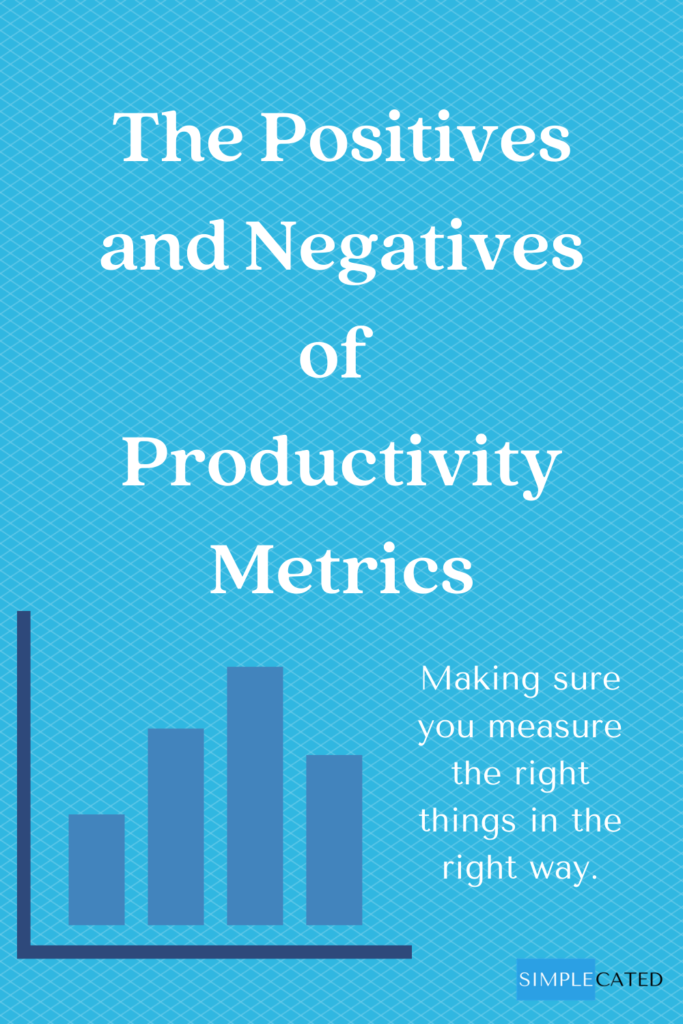Productivity metrics can be a very helpful performance management tool, but if not carefully designed and implemented, they can lead to negative outcomes. Multiple LAPD officers are being investigated for allegedly falsely labeling individuals as gang members in order to boost their productivity statistics. According to some, officers were pressured to show more gang contacts in their daily statistics. You can imagine what a major issue this is in a number of ways. As leaders, we must be aware of the possible implications of the expectations we put in place.
Even well-intentioned goals can have detrimental impacts. Consider customer service representatives with an expectation of answering X number of calls per hour. On the surface, that sounds like a good metric because it sets a productivity expectation while keeping customer hold times down. The problem is it easily leads to poor customer service as the reps rush through calls in order to meet their metrics. Similar issues can arise with a delivery driver who is expected to complete a route in a certain amount of time. When a traffic jam causes a delay, the driver speeds down roads to get through on time, plus, rushes through deliveries, leading to a bigger potential for accuracy issues.
In a lot of jobs, productivity metrics are helpful. For one, it’s easy to make them SMART goals (specific, measurable, achievable, relevant, time-based) so you can clearly outline expectations and measure productivity. The customer service goal, “Answer X number of calls per hour,” is a SMART goal. They can also pretty clearly distinguish your high performers from your low performers and give you a concrete expectation to hold your employees accountable to.
However, in order for metrics to be helpful, we have to pay attention to the domino effects. We must think through the implications of these expectations and what kinds of behaviors we would really be encouraging. Here are 4 things to keep in mind as you’re designing performance metrics:
Encourage the behaviors you really want. Make sure you’re measuring what’s really important, and evaluate the behaviors you’re encouraging (or discouraging). With the customer service representatives, maybe your overall goal for the department is to provide quality customer service. In that case, consider a supporting metric, such as keeping customer callbacks to X percentage or less per week.
Implement a set of metrics. Instead of a single, standalone metric that could have an unfortunate result, implement a set of metrics that complement each other and together reflect the behaviors you’re wanting. You want your reps to handle calls efficiently, so you keep the metric, “Answer X number of calls per hour,” but you also implement, “Keep customer callbacks to X percentage or less per week.” By having both metrics in place, you emphasize both efficiency and quality. Keep in mind that having too many metrics gets really cumbersome, so you want to keep the number of metrics to what you really need.
Design the metrics for your high performers. Because metrics can provide a simple way to hold low performers accountable, it’s easy to find yourself designing your metrics with them in mind. Avoid that, however, because you can find yourself with overly punitive metrics that decrease morale for the whole team. Instead, think about your top performers – the employees you want to make sure you keep – and design your metrics with them mind. This will help you establish metrics that reward your top performers and positively motivate others to improve their performance.
Empower your employees to make decisions that achieve your overall objectives. As nice as metrics are, the real world doesn’t always fit into this neat box, so leave room for that when holding employees accountable. Emphasize the most important objectives so that your employees know what the priorities are, and provide them with the ability and support to use an appropriate level of discretion when there are competing demands. For our customer service representatives, some calls will be more complex than others, and they’ll have to decide between efficiency and quality. Since your overall objective is providing quality customer service, you want quality to be the priority. So, you emphasize this expectation and provide your reps with support in situations where calls may need to take longer than usual. Perhaps after 10 minutes, a team lead joins the rep to assist with the call, and after 15 minutes, a supervisor joins. If the call truly warrants this much time, then the additional support will help the rep through the complex issues. If, on the other hand, the issue is that a low performer isn’t properly handling a call, you’ll know that too.
Productivity metrics can be effective tools for having high-performing teams who accomplish business objectives, but only if they are carefully designed and implemented. The implications must be considered so that you can anticipate the domino effect and what actions your employee might take in order to meet these metrics. You don’t want to end up with a lot of other issues because of the expectations you put into place. By evaluating your metrics ahead of time and making sure they measure the right things in the right way, you’ll be able to measure productivity effectively with positive outcomes.
Photo credit: By serebryannikov / Canva





